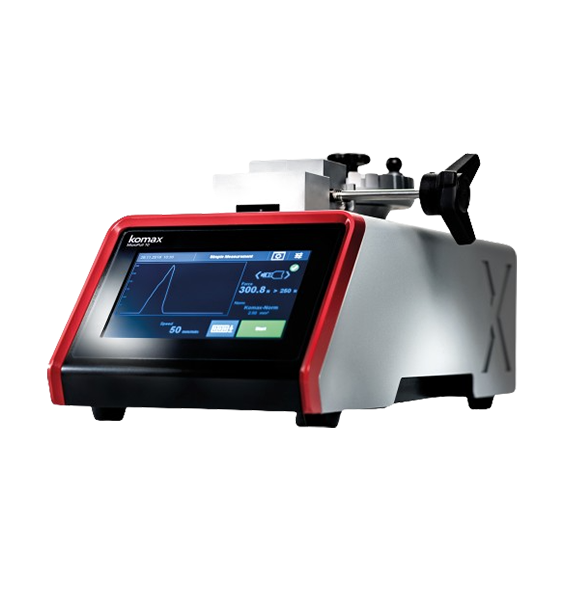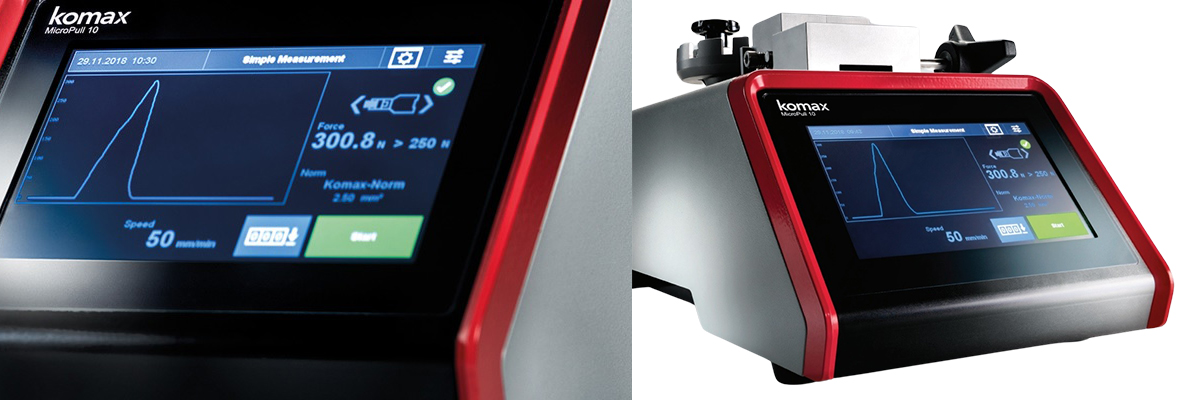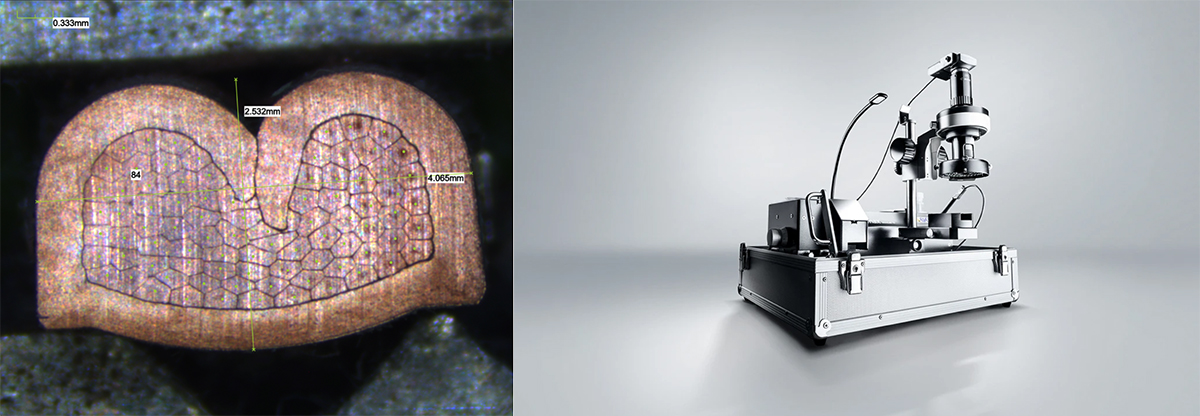|
|
Laboratory cable testsOur company is committed to achieving high quality in accordance with automotive industry standards, which also extend to wire crimping. In order to examine and maintain these standards, we have established a testing laboratory. Our laboratory tests include cable’s electrical testing, Pull-out Force Measurement and Crimp Cross Section Analysis, of which Electrical testing is a basic service at the end of production, while Pull-off force measurement and crimp cross-section analysis can be optionally requested for the product manufacturing process. Our customers can request laboratory testing not only during production but also on cables that have already been manufactured. Based on the results of these post-production tests, conclusions can be drawn regarding manufacturing defects or damage. Pull-out force testing and Crimp Cross-Section Analysis are destructive tests, so the products cannot be used after the testing. Typical crimping failures and their testing methods:
Proper crimping procedures and the use of correct tools are essential to ensure reliable connections and operation. Additionally, through laboratory tests, we can support pre-production tool calibration. Pull-Out Force Measurement: Pull-out force testing involves measuring the force required to separate the wire from the crimped contact. The quality of the crimped connection depends on its mechanical strength and electrical conductivity. When the results of pull-out force tests fall within the range specified by the standard, it ensures that the correct crimping force is applied during the crimping process. This is critical because poor contact leads to higher contact resistance, which affects the measurements. Our goal is to create a large contact surface between the wire and crimp by compression. It is necessary to ensure a good metal-to-metal connection. The most common test method is to pull the crimp from the wire with a constant rate (typically 25-50 mm/min) until it breaks. The maximum force is measured using a special tensile-testing machine (known as Pull Tester). This process is illustrated in a diagram (on the picture below), where the X-axis represents time and the Y-axis represents force. The highest peak value is the measured force (usually before the breakage). This value is then compared to the table of minimum pull-out forces specified in the standard in order to determine a pass or fail of the connection. A key indicator of the reliability and durability of wire crimps is the pull-out force. Our laboratory has such a device that allows precise and accurate measurement of pull-out force. It is also important that the values measured with the equipment fall within the value range specified by the manufacturer, ensuring proper contact. This guarantees that the crimps have the right mechanical and electrical properties in our products.
Crimp Cross-Section Analysis: Crimp Cross-Section Analysis is a test that allows us to visually inspect the crimp’s segment under a microscope using analysis software. We check for proper crimping geometry and compression of the conductor wire and crimp to ensure good contact. Crimp samples are prepared for inspection through cutting, grinding, and etching. Optimal crimping results in uniform strand compression and a honeycomb-like appearance. Crimps are evaluated in several main areas, like: crimp height; crimp width; number of wire strands; and air-free crimping within the contact crimp. Through cross-section analysis in our laboratory, we examine the structure and size of the crimps in detail. This allows us to detect the compliance of manufacturing quality and ensure that our products function flawlessly, even under extreme environmental conditions. It is also important that the dimensions of the finished crimp fall within the manufacturer's specified crimp size range, ensuring proper electrical contact.
Automated electrical cable testing Our cable manufacturing team also deals with electrical testing. In this way, cable breaks, short circuits and pole reversals are also eliminated on the cables that we produce. We also consider this test as a separate service, so we can also carry out inspections and tests of products manufactured by others. We can even carry out a review of in-use products, assess any malfunctions, and determine their causes. Cable Connector Leakage Testing Our team is also equipped for leakage testing. In many cases, the cables ordered from us undergo tests in humid or even submerged conditions. Therefore, it is of utmost importance that the assembly of connectors and cable joints are properly sealed against leakage. For this purpose, the testing is carried out in the automotive industry's customary manner. We prepare a mating connector for the preassembly, which is the necessary tested connector with the wires and cavity plugs. During the measurement, we observe whether there is any air leakage. If the leakage remains below the specified threshold, we consider the manufacturing to be satisfactory. If it exceeds the threshold, we investigate whether the issue can be corrected. If it cannot be repaired, that connector will be scrapped. In the event of a successful test, we continue with production. During the fabrication we use strict testing processes, to grant the highest manufacturing quality what our customers need. To learn more about our cable and crimp testing services, please contact us. We are happy to help you find the right solution according to your needs and requirements. |
All rights reserved. ProDSP Technologies Zrt. 2022 ©
Website built by Barna Design



